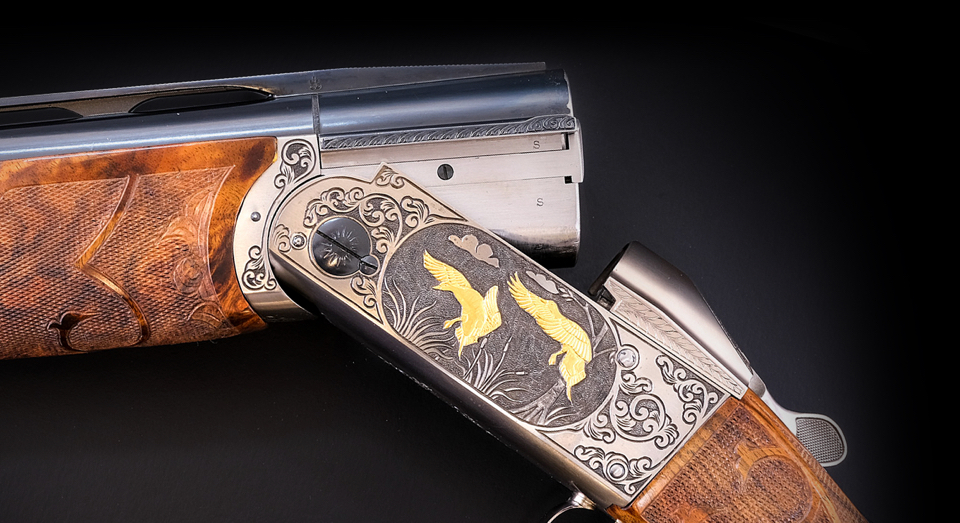Oliver Winchester produced the first lever-action rifles to transform the landscape of the American West. The 1866 model was groundbreaking, in its own right and was the most popular rifle in the country, until 1873. The Winchester 1873 repeater was more accurate, reliable, and better designed than any rifle to date.
The Winchester 1873 repeater rifle became an instant legend, coining itself, “The Gun That Won the West.” Today, it is renown as one of the finest repeater rifles ever designed – so much so, that it remains in production, to this day. When it was released, in 1873, the West had never seen such a firearm, and it changed everything.
The Classic Winchester 1873 Carbine: A Classic Gun Collectors Guide
A generation before the Winchester 1873 – just before the Civil War – the 1860 Henry rifle was the first of it’s kind to feature a lever-action reloading system. The lever-action design of the Henry rifle enabled soldiers to shoot at many times the rate of percussion-fire cap-and-ball muskets. By the time Oliver Winchester designed the 1873 repeater, the Winchester Repeating Firearms Company had already changed the world of shooting, forever.
Origins of the Carbine Repeater
The military was slow to adopt the Henry rifle, in part, due to the ornate ammunition for which it was chambered. The Henry rifle was chambered for black powder .44 rim-fire cartridges – expensive and not widely manufactured. But, in spite of the military’s reluctance to adopt the rifle, individual soldiers purchased their own Henry repeater rifles.
For the first time, the innovation of the repeater rifle enabled suppressing firepower without the need for dominant forces. A single Henry rifle had a firing rate of 5 to 1 over a musket. Dominant firepower, in-part, helped Union forces win the Civil War in 1865.
But, before the superior lever-action design could be widely adopted, the Henry rifle needed an upgrade. That upgrade, became the Winchester 1866 repeater rifle. The 1866 model was more resistant to jamming and kept the shooter from burning their hand on the barrel. And, it improved the loading mechanism, making it faster and easier.
The 1866 was the most popular rifle of its day – until the Winchester Repeating Arms Company released the 1873 carbine repeater. The 1873 was, and still remains, popular enough to continue production. Many other firearms, of the same time period, are antiques – but not the ‘73 repeater.
The 1873 repeater is still considered a modern firearm, according to the Federal Firearms Act. Even though the ‘73 is well over 100 years old, you must practice the same firearms safety measures as with modern handguns.
Winchester 1873 Repeater: What Made it the Gun That Won the West?
The 1873 comes with an iron receiver, which is more damage-resistant than the 1866 model’s copper receiver. The first-edition models offered as 24-inch octagon barrel sporting rifle, 20-inch round barrel carbine, and a 30-inch round barrel musket.
The biggest differentiator, between the first-generation model 1866, and the second-generation model 1873 Winchester, was ammunition. A first-generation Winchester 1873 repeater was chambered for .44-40 caliber centerfire rounds. Both, the 1860 Henry rifle, and the 1866 Winchester repeater were chambered for .44-40 caliber rimfire rounds.
Winchester Repeater Ammunition: Rimfire VS Centerfire
The centerfire cartridge was first introduced around 1800, while flintlock rifles were the standard. It wasn’t until the 1820’s when the rimfire cartridge made its debut. The centerfire cartridge was more reliable and effective for higher caliber ammunition, however, the cost of manufacturing centerfire rounds was prohibitively expensive.
For lack of better options, the original Henry repeater and Winchester 1866 repeater were chambered for .44-40 caliber rimfire cartridges. But, the higher the caliber, the more powder propellant in the rim. Rimfire rounds that were above .22 caliber were prone to misfire.
Between 1860 and 1873, centerfire cartridges became affordable to manufacture. Oliver Winchester jumped at the opportunity to design his second-generation repeater to fire the more reliable and higher caliber centerfire cartridges.
1873 Winchester Rifle: Still the Standard of Excellence
Later editions of the Winchester 1873 repeater were chambered in .38-40, .32-40, and .22 caliber. When the 1873 carbine came onto the plains of the American West, it was the very first repeater of such quality and caliber. Today, first-edition Winchester 1873 repeaters continue to hold royal status in the history of the West.
If you enjoy learning about classic rifles, like the Winchester 1873 repeater, subscribe to the newsletter. You can read more about America’s first gun manufacturers on the CTFirearms blog. And, share this article with other classic firearm enthusiasts through social media.
